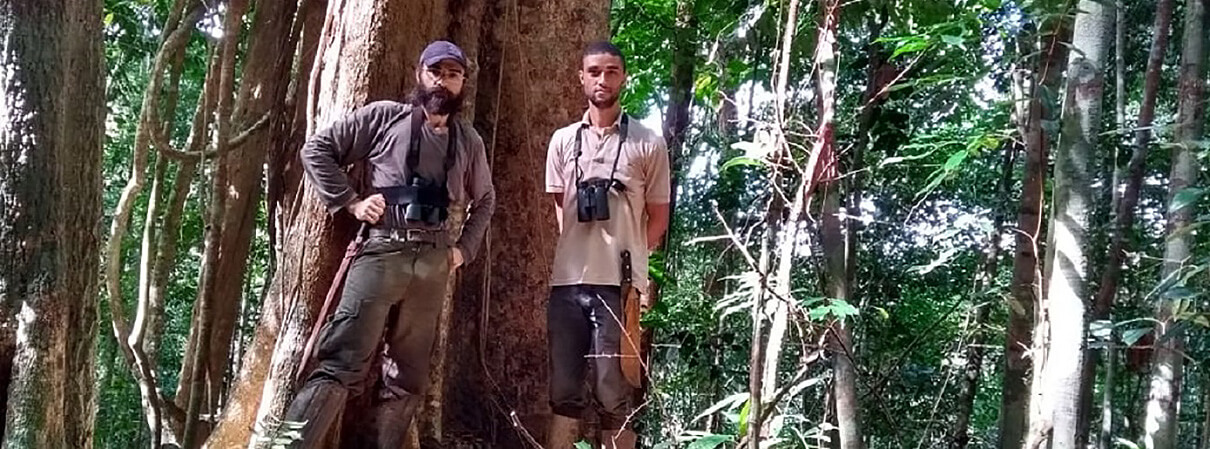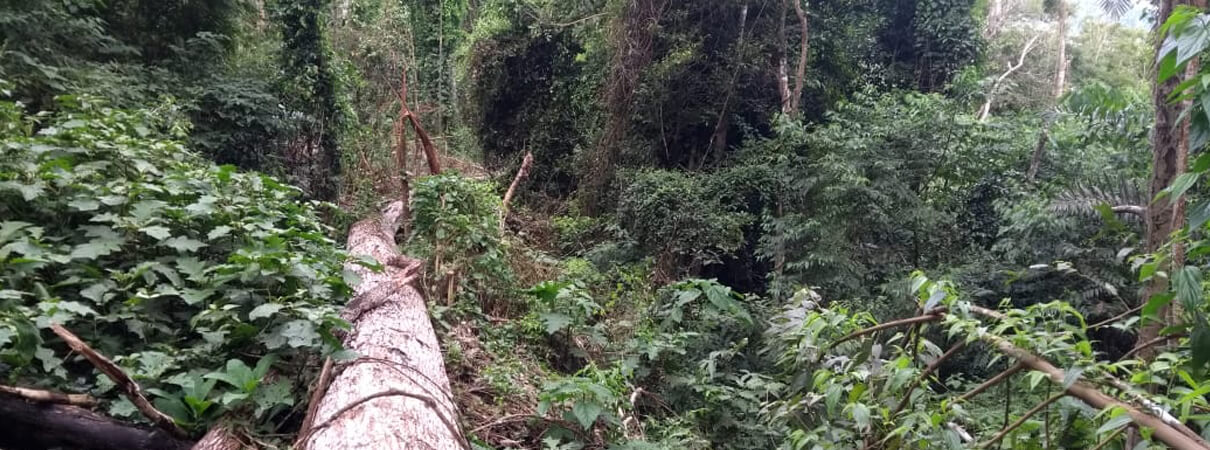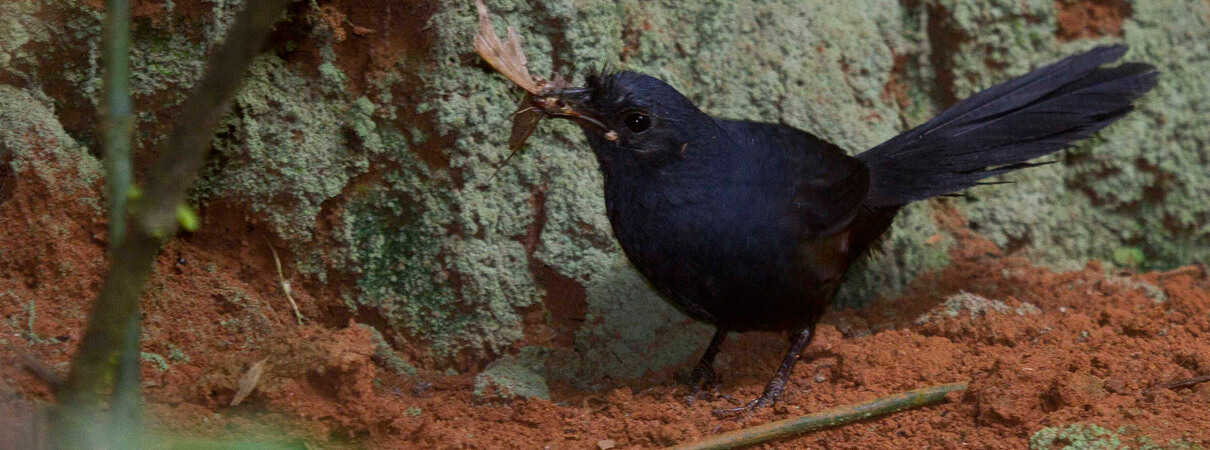Looking for a Needle in the Brazilian Jungle
The first of three searches for the Stresemann's Bristlefront, one of the world's most endangered birds, has concluded in Brazil. Alexander Zaidan of Fundação Biodiversitas and his team scoured an area of forest outside of the “Mata do Passarinho” Reserve (“Songbird Forest”) over the past few days — and so far have found no sign of the species.

Members of the research team searching for the Stresemann's Bristlefront (from left): Alexander Zaidan de Souza, a world expert on the species, and Jhonattan Vilela Diogo. Photo courtesy Fundação Biodiversitas
But it's far too early to give up hope. This search has been challenging for several reasons.
The Bristlefront's global population is estimated to be fewer than 15 individuals. About the size of a catbird or a cardinal, this bird is a tapaculo — one in a family of 50-plus species found mainly in South America that are known for their skulking habits.
Making matters more difficult, the team has been searching a relatively large area with ample thick vegetation, making a maze of sorts for the team to wind through. The birds' dark plumage can be difficult to make out in the dim light of the forest. And to make matters worse, fires, exacerbated by an ongoing regional drought, have damaged the remaining habitat.

The effect of fire in the forest where Stresemann's Bristlefront have been found previously: a tangle of vines and fallen trees. Photo by Alexander Zaidan
“Fire is currently the biggest threat for the Bristlefront,” shares Zaidan. “Individuals that remain may be in small fragments that could be consumed by fire in a short time. One of the most promising fragments … was totally consumed by fire two years ago. The reason was the same drought that so badly affected the region around Mata do Passarinho.”
This species is a passerine, or songbird, that nests in underground tunnels. While this behavior is not unusual for birds in general — for example, Belted Kingfishers and Burrowing Owls both nest underground — it is out of the ordinary for passerines.

These skulking birds can be hard to find. Photo by Fundação Biodiversitas
Do the birds make their own tunnels? How much do the birds weigh? We don't yet know. Given how limited research opportunities have been for this rare species, many questions remain. But before the answers to these questions can be found, the species' drop toward extinction must be halted. The best chance of saving this species is by putting more of its diminishing habitat under protection.
Alexander and his team will resume their search in mid-August, this time looking in areas within the reserve. With any luck, they will find the birds. But if not, we'll stay optimistic. With so little known about the species, who knows? It's possible that these hard-to-spot birds are simply hiding in their tunnels as the team continues its search, safe and sound from the difficult conditions above ground.
Read about the search for the Stresemann's Bristlefront from the beginning with the first blog in this series and look for more updates when the search resumes.
Brazilian partner Fundação Biodiversitas, American Bird Conservancy, Rainforest Trust, and others established the Mata do Passarinho Reserve in 2007. Mata do Passarinho is a demonstration site for a larger Global Enviroment Facility (GEF)-funded project, in partnership with the United Nations Environment Program and BirdLife International.

Jordan Rutter is a life-long birder with a passion for connecting others to the natural world through birds. With an M.Sc. in conservation biology from the University of Minnesota – Twin Cities and over ten years of experience in the ornithology field, she is ABC's Public Relations Director and currently serves on the Wilson Ornithological Society Council. Jordan also enjoys nature photography and gardening.


















































